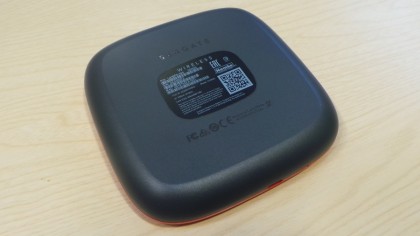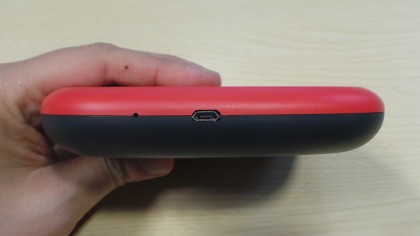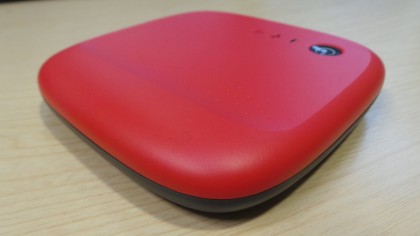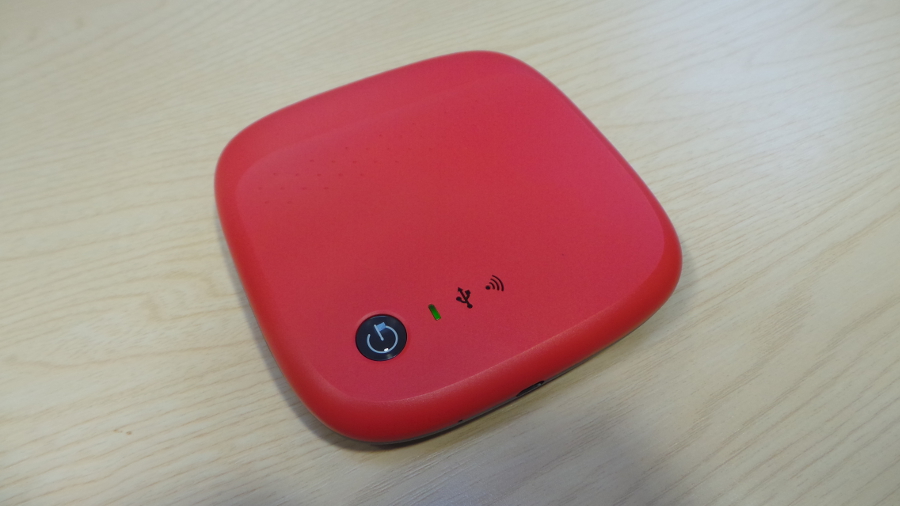TechRadar Verdict
This effort from Seagate isn't a fundamentally bad device, but it's outdone by one of the vendor's other products pitched at a cheaper price.
Pros
- +
Smart design
Cons
- -
Device isn't secured by default
- -
Only USB 2.0
- -
Only three devices can connect simultaneously
- -
Bulky
- -
Not good value for money
Why you can trust TechRadar
Seagate added a strange looking product to its portfolio earlier this year. No, I am not talking about the Seagate Seven which was reviewed recently, but the Wireless Mobile Storage instead.
This product is essentially a consumer-focused, wireless network attached storage, not unlike the Seagate Wireless Plus 2TB drive we reviewed last year. The device can create its own private network with up to three users connected concurrently.
It has an integrated battery that can power the device for up to six hours – that longevity will vary due to a number of factors like the type of content, whether you're streaming, and how many people are connected to it.
This is a 500GB wireless mobile storage device that looks a bit like a rather large pebble. Unlike its bigger brother, the Seagate Backup Plus 8TB, this one has soft edges. Seagate offers the gadget in five different colour options, a move perhaps to make storage become a bit more trendy.

Design
At just over 280g, it is roughly about the size of a double CD case (remember those?) and fits comfortably on your palm (provided you have fairly big hands). Note that there's no Seagate branding other than on the bottom of the device.
It is solidly built and other than a big power button and status LEDs (power, wired connectivity, wireless connectivity), the only other feature worth mentioning is a micro-USB 2.0 port that is used for charging the device and transferring data (as expected you won't be able to use wireless and wired data transfer simultaneously).
The Seagate Wireless Mobile Storage 500GB is compatible with most mobile/desktop operating systems and the likes of Apple's AirPlay, LG's SmartTV, Google's Chromecast, Roku and Amazon's Kindle Fire.
Seagate is clearly targeting customers who may not be very tech-savvy, but who want to get a plug-and-play wireless device to store their content. So it's not a surprise therefore that data transfer/access is mostly expected to be done wirelessly rather than via a USB cable.

You access the device using Seagate's Media App, which is standard across the whole range of wireless Seagate storage solutions (which means that it hasn't been dumbed down or adapted for less savvy users).
The app is fairly straightforward and allows for limited file management capabilities. As is the case for most bundled applications, Seagate stuck to the most basic set of features – it does allow for an auto-upload feature as well as remote access over the internet (i.e. using the device as an access point). If you want a more versatile backup solution, then check out our top 10 backup solutions on the market.
Also we fail to understand why Seagate chooses to ship its devices with an unsecured wireless connection. You need to change your login details as soon as possible after you connect and leave the storage device in wireless mode.

Performance
The drive is based on a 5400RPM, single platter 2.5-inch hard disk drive with 16MB of cache, and it managed to deliver decent performance despite being connected via a USB 2.0 port.
Using CrystalDiskMark, it managed just over 35MBps on sequential read/write benchmarks, achieving 136 IOPS and 255 IOPS on read and write, respectively.
As for its streaming performance, we managed to stream three HD videos from the device to a trio of mobile devices, without any visible lag but again, as for battery life, this will very much depend on your content, the immediate environment and the number of devices connected to the Seagate drive.

Désiré has been musing and writing about technology during a career spanning four decades. He dabbled in website builders and web hosting when DHTML and frames were in vogue and started narrating about the impact of technology on society just before the start of the Y2K hysteria at the turn of the last millennium.
